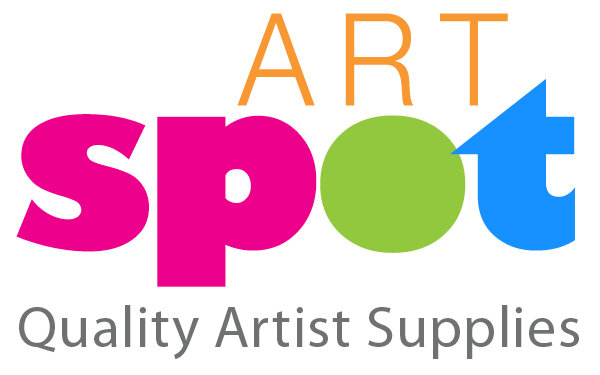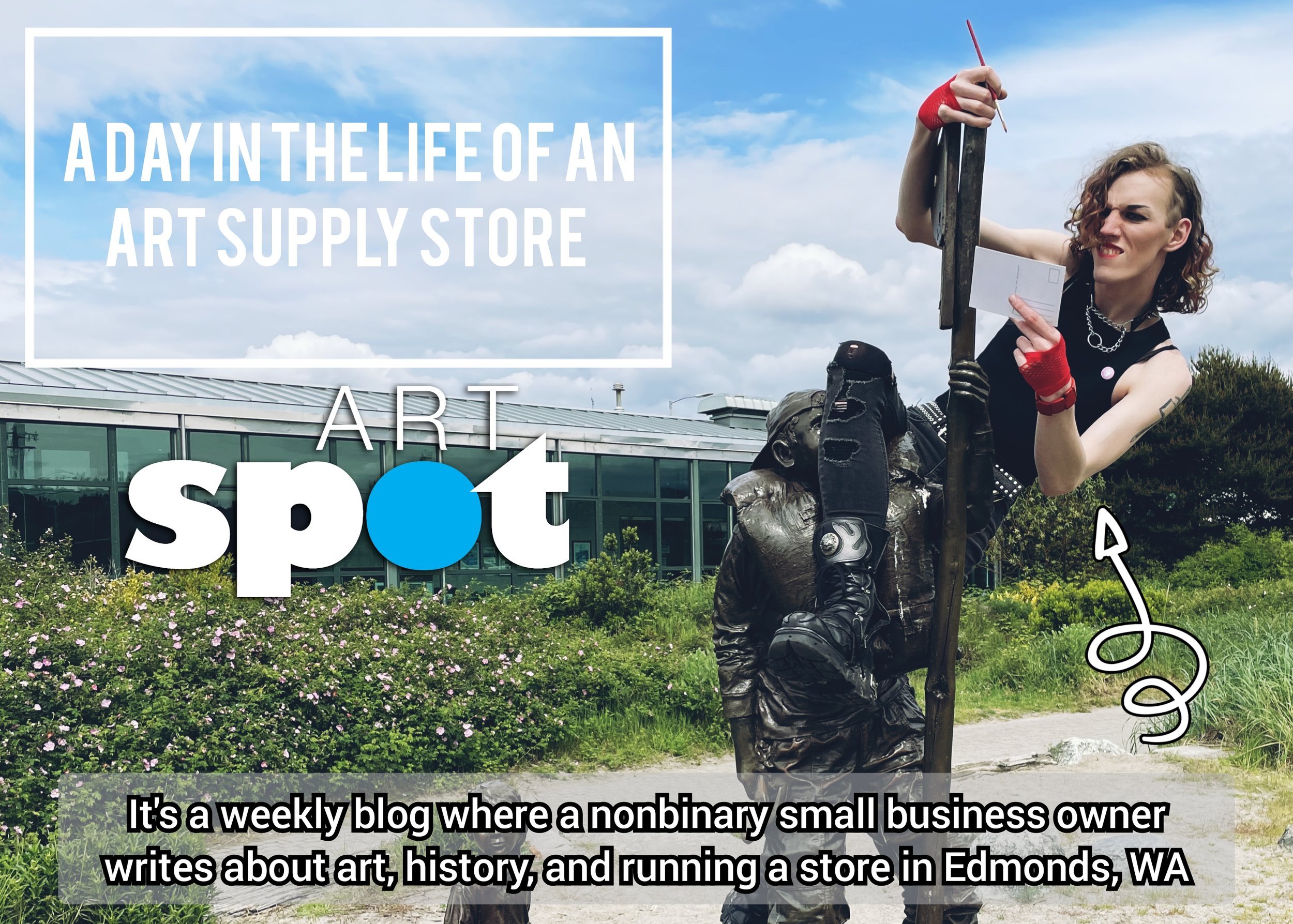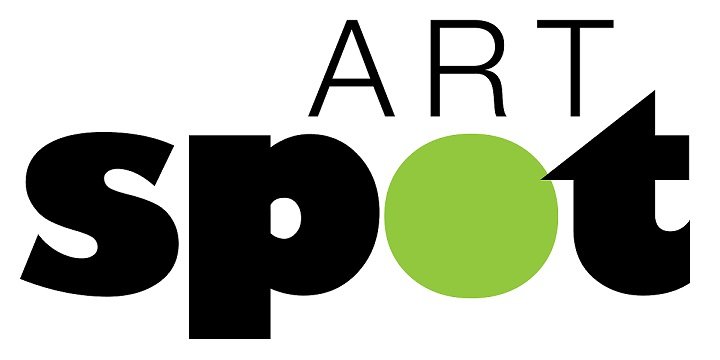Or how to slow down and appreciate the world around you
Having just spent a month in France with my mom and sister after college, I was riding an artistic high with my new degree in design. We’d spent ample time in Paris and the countryside, and after my family had flown home, I was set loose upon Britain for another month without supervision. Not wanting to squander my time, I decided to hold myself to a new discipline to mark the days passing: urban sketching.
Having been involved with ARTspot for four years, I was at least vaguely aware of urban sketching but not so much that I felt boxed in by rules and expectations(1). This was years before Sketcherfest, PxP, or even the 365 Challenge at ARTspot, but I held myself(2) to try and do one drawing every day I was on my own. What happened next was one of the most informative creative periods of my life.
My reasoning was simple. My totally neurotypical brain(3) always had difficulties with photographs, and it only got worse with my phone involved. Like anyone else, I enjoy having good memories to remember, but once those memories are locked away in my phone or the cloud I generally forget to keep remembering them. The fact that it takes mere seconds to snap a photo does nothing to cement a memory. I needed a different strategy.
Sketching takes time(4), and that’s exactly what I had in ample supply while traveling at my own pace. I quickly learned that even a two-minute(5) sketch while waiting for coffee did a lot. Catch me sitting in Trafalgar Square for almost an hour(6), and I have one of my favorite drawings ever. When you don’t know exactly how much time you’ll have before you have to hop on a bus, get out of the rain, or any other unforeseen circumstances, there are two possible ways I approach a satisfying drawing.
One way to achieve this is to start loose and continue to noodle in detail the longer you’re inclined or are able to stay in the same spot. Big shapes, the rough lines of perspective, and contrast are all key. Getting these aspects on paper would at the very least allow me to revisit the drawing later if I wanted, and everything else beyond that was just frosting. Recording the details of architecture, the bustle of passerby, and foliage all add to the detail of the memory, but just sitting with a perspective for just a few minutes would do so much to cement the idea of that specific moment and place. This is also a great exercise in drawing what you see(7) coupled with prioritizing what’s going to be detailed out first.
Another way to approach this kind of time crunch is by focusing on a single object. A cup of coffee, someone’s shoes, or an interesting building are all great options I’ve explored among nearly infinite others. This is an exercise in elevating a potentially mundane item(8) as a solid anchor to an experience(9). With these drawings in particular, I like to make written notes to highlight what my other senses are picking up and what thoughts are going through my head as I sit in the moment(10). Highlighting many little details is how I recorded a sunburned hike up to Arthur’s Seat in Edinburgh, noting the rock sculptures I found(11), a kid playing Pokemon Go atop the eponymous seat itself, or the odd buildings of Calton Hill in the distance that I never managed to see up close. All these little details combined made for a very memorable day!
The real kick in the head for me with all this is that I no longer have the photos I did end up taking on my trip. A few exist here and there, but that phone ended up breaking just before I’d set up my google account. Those drawings I have are all I have from that trip. Though because I took the time to sit with those moments, I remember the heat of the open air markets, the flats shared with my new punk friends, the art I saw, and the paths I trod.
(1) No super good art is made by following rules and expectations. Ew, gross.
(2) And largely I stayed true to my goal
(3) It’s not. In case you couldn’t tell, don’t feel bad. I just spent the first 27 years of my life just thinking I was a little stupid, had a hard time focusing on things that didn’t hold my fascination, and pretty much every other sign of neurodivergence as it’s understood today. In practicing my sketches, I accidentally stumbled into a way of working with my neurology rather than keep trying to fit a square peg into a round hole.
(4) Half the reason why people are intimidated from taking up the practice in my opinion. Like meditation, it’s hard to convince yourself to set aside 5-15 minutes a day to do something genuinely good for you because who has that kind of time in economy? You absolutely do, but somehow these things feel like huge endeavors as opposed to watching an hour of TV.
(5) Sometimes I would do a bit more work on these when I got back to where I was staying when the memories were fresh, but often I’d just let them be a record of a small moment.
(6) I didn’t know I was being stood up for a date, but I remember sunlight hitting the rows of buildings down Whitehall, the smell of August in Westminster, and how excited I was for a free museum date that I ended up having to take myself on.
(7) This was the first, hardest lesson I had to learn when I was starting to take my art more seriously. The sooner you learn not to filter what you’re seeing while making art, the sooner you can start to depart from realism with intention.
(8) One of my favorite series of sketches I’ve seen from a customer was a daily record of what the weather looked like outside the window of the space she was staying in. Given that the place was an island off the coast of Scotland, the weather was predictably bleak for the most part, but the really fascinating part of the series was the collection of objects on the windowsill that changed from day to day. Whether they had been staged on some days or not, this was a beautiful way to mark the passing of time during a trip worth remembering.
(9) This also helps to prove that under the right circumstances, just about anything or any moment can be significant if you take a few minutes to let yourself see it.
(10) This aspect is transferable to the previous method as well, but I found it suits me better to fill in the gaps with this kind of drawing.
(11) And the ones I made along the way


